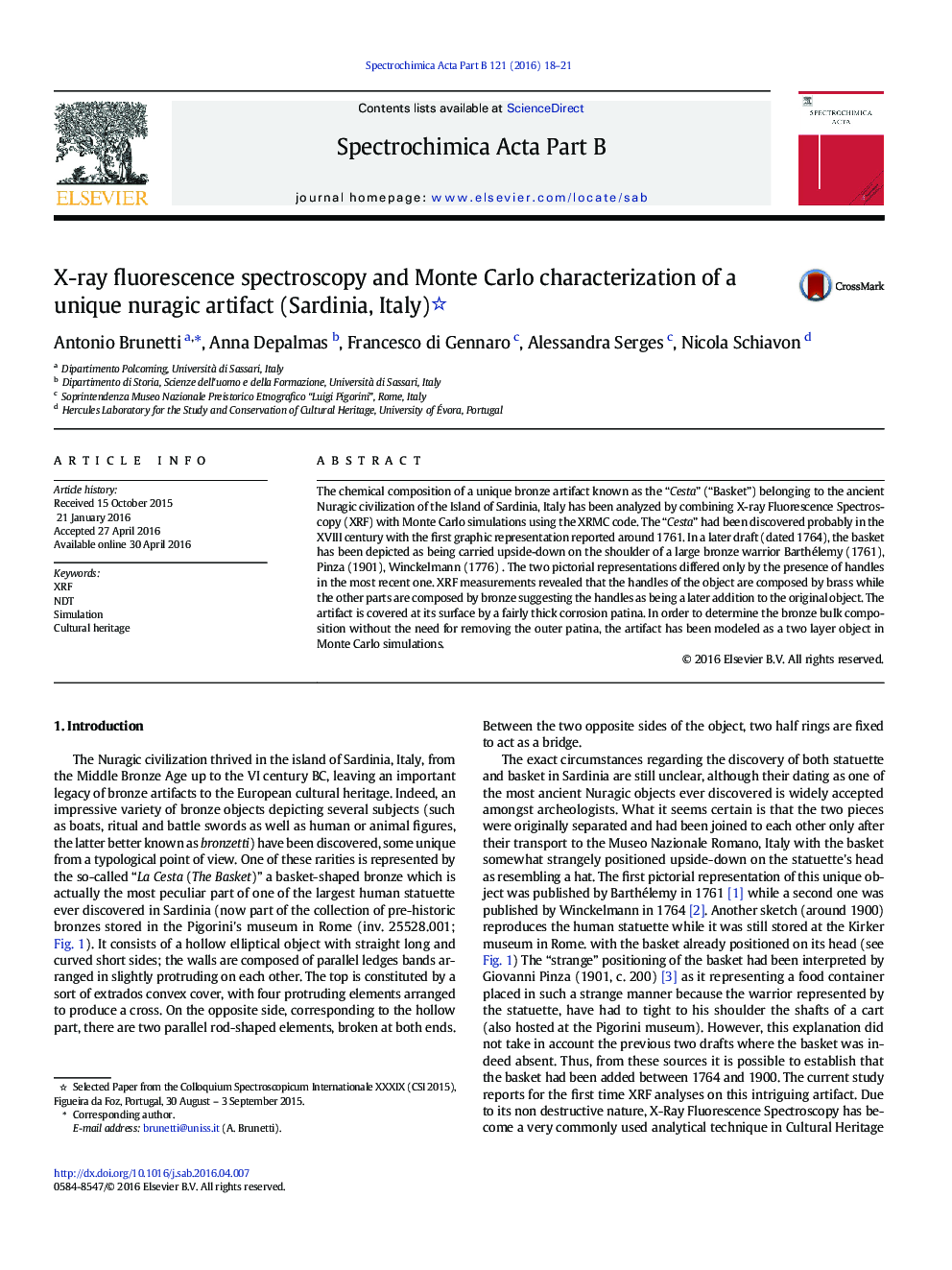| کد مقاله | کد نشریه | سال انتشار | مقاله انگلیسی | نسخه تمام متن |
|---|---|---|---|---|
| 1239605 | 1495682 | 2016 | 4 صفحه PDF | دانلود رایگان |

• An integrated approach based on XRF measurements and Monte Carlo simulation has been applied.
• The study discovered that a part of the artifact was added to the original sample.
• This approach allowed a complete and non destructive characterization of the object.
The chemical composition of a unique bronze artifact known as the “Cesta” (“Basket”) belonging to the ancient Nuragic civilization of the Island of Sardinia, Italy has been analyzed by combining X-ray Fluorescence Spectroscopy (XRF) with Monte Carlo simulations using the XRMC code. The “Cesta” had been discovered probably in the XVIII century with the first graphic representation reported around 1761. In a later draft (dated 1764), the basket has been depicted as being carried upside-down on the shoulder of a large bronze warrior Barthélemy (1761), Pinza (1901), Winckelmann (1776) . The two pictorial representations differed only by the presence of handles in the most recent one. XRF measurements revealed that the handles of the object are composed by brass while the other parts are composed by bronze suggesting the handles as being a later addition to the original object. The artifact is covered at its surface by a fairly thick corrosion patina. In order to determine the bronze bulk composition without the need for removing the outer patina, the artifact has been modeled as a two layer object in Monte Carlo simulations.
Journal: Spectrochimica Acta Part B: Atomic Spectroscopy - Volume 121, 1 July 2016, Pages 18–21